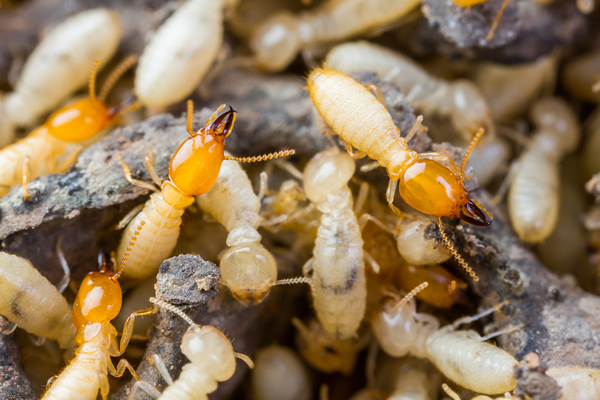Wildlife
- Squirrel
- Rat
- Bat
- Mice
- Raccoon
- Dead Animal
- Birds
- Snake
- Beaver
- Opossums
- Bobcat
- Armadillo
- Wildlife Management Programs
Domestic Animals
Pest Control
Trash Removal
Termites
If you are currently dealing with domestic or wildlife problems here are some quick numbers to get direction and resolutions to your animal or insect problems:
- Florida - Domestic Animals ( Cats and Dogs ): 305-884-1101
- Florida - Wildlife Removal, Control (Squirrels, Bats, Rats, etc): 877-427-1524
- Georgia - Domestic Animals ( Cats and Dogs ): 706-790-6836
- Georgia - Wildlife Removal, Control (Squirrels, Bats, Rats, etc): 877-427-1608
- Miami & Ft Lauderdale - Pest Control Services (Termites, Roaches, etc): 786-251-9640
- Palm Beach & West Palm Beach - Pest Control Services (Termites, Roaches, etc): 877-590-0462

What do they look like?
Isopterans are soft-bodied, usually light-colored insects. The forewings and hindwings are equal in length and held flat against the back of the termite.
Where do they live?
There are approximately 2,300 species of termites worldwide. Most live in tropical and subtropical regions of the world. Others live in temperate regions of the world. Approximately 41 species of termites live in the United States, most of which live in the southwest.
What kind of habitat do they need?
Termites are found in dark, damp areas whereby they are not exposed to air. They require a source of moisture to survive. In temperate regions, they are found in dead tree stumps, dead logs, and in the soil. They are also found in dry wood strucures where the termite nest has been established in the soil. Timber-based colonies may contain hundreds of individuals.
In tropical regions, termites are found where cellulose-rich food sources exist, in both living and dead vegetation. Some tropical termite species are known to raise giant mounds consisting of termite feces, soil, and fungi. These mounds may contain millions of individuals.
How do they grow?
Termites develop via simple metamorphosis from egg to nymph to adult. Five to six molts are necessary for the termite to attain maturity. Those that do not achieve sexual maturity become workers or soldiers. The life cycle requires a year for completion.
How do they reproduce?
In termite colonies, there is one king and queen pair which develop from fully winged adults. The queen develops an enlarged abdomen to accomodate her increased egg-laying capacity. She may lay millions of eggs annually. In some species, the king is smaller than the female. These fully winged adults are produced in large numbers, whereby individuals leave the original colony, locate a new nest site and mate, and establish a new colony. This may not happen for 5 to 10 years after the establishment of the original colony.
If the king and/or queen dies, or part of the colony becomes separated from the parent colony, some of the young will develop into a new king and/or queen. The new king and/or queen will achieve sexual maturity without becoming fully winged and without leaving the nest.
Special workers and soldiers care for the eggs and young. Worker and soldier termites are both male and female, sterile, wingless, most are blind, amd sometimes they are polymorphic.
How long do they live?
Queens and their colony may survive for several years. Females may live to 20 years. Non-reproductive termites live for a couple of years. Individual termite colonies have been known to exist for approximately 100 years.
How do they behave?
Workers are chiefly nest builders and repairers, foragers, feeders, and groomers of other members of the colony. Worker termites are those that cause destruction of wood structures.
Soldiers are chiefly defenders of the nest. On their elongated head, some species use their large, hooked mandibles in a scissor-like way to decapitate predators such as ants. Other species with a nasus disperse a sticky, toxic fluid at an enemy. For a few species, soldier termites are absent; therefore, nymphs and workers defend the colony.
How do they communicate with each other?
The king and queen secrete inhibitory pheromones that work synergistically to suppress reproductive development of workers and soldiers. Juvenile hormones in termite eggs influence caste differentiation such that numbers of workers and soldiers remain constant throughout the life of the colony.
For termites that build giant mounds, trail pheromones are used in subterranean tunnels as a means of navigation.
What do they eat?
Isopterans get their nutrition from cellulose in wood. Digestion of wood occurs by bacteria and protozoans in the intestinal tract of many termites. Young termites acquire the microorganisms when workers feed them.
Some tropical termites use cultivated fungi to predigest food rather than microorganisms.
What eats them and how do they avoid being eaten?
Termites nests have special members that act as soldiers. They have extra big jaws, or sometimes chemical sprays to use on enemies of the nest. Soldiers and workers defend the nest.
What roles do they have in the ecosystem?
Termites tunnel through wood allowing for decomposition of the wood into humus.
Do they cause problems?
Termites cause extensive damage to buildings and any other sturcture made of wood.
How do they interact with us?
In some cultures, termites queens are considered a delicacy and source of protein for humans. Termites are recyclers of wood.
